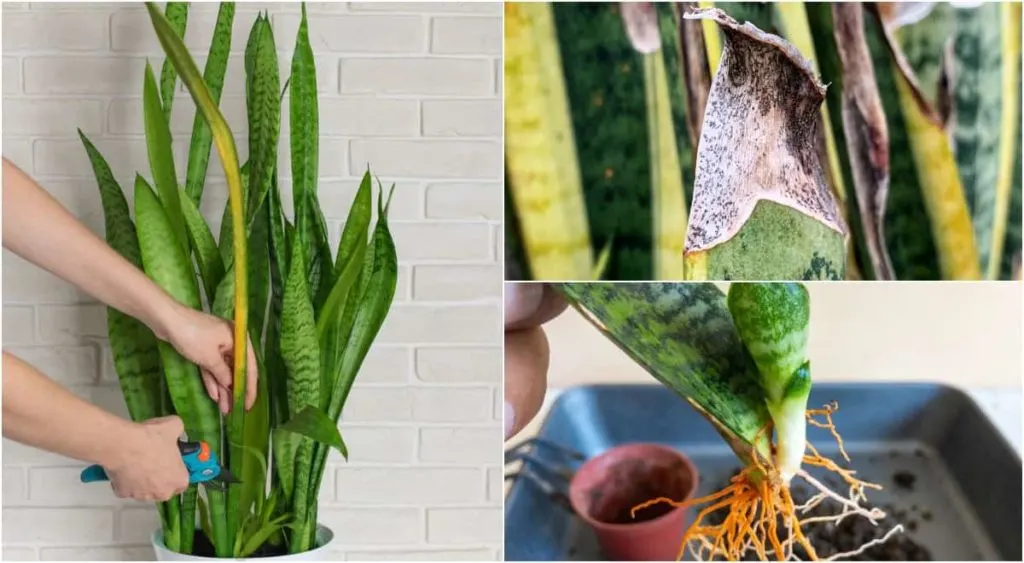
Snake Plants (Sansevieria) are one of the most – if not the most – popular houseplants on the market. Commonly referred to as mother-in-law’s tongue, their structural shape is highly sought after, but they are chosen most often for their ease of growth.
If you’re usually a houseplant killer, this is the plant for you.
Due to its incredibly carefree nature, many plant parents are shocked when they discover problems with their snake plant. They are known to tolerate a wide range of lighting conditions and can handle plenty of neglect. It’s hard to imagine anything ever going wrong.
Unfortunately, there are quite a few things that can go wrong with your snake plants, from drooping leaves to brown spots or lack of growth. However, most are easy to fix, and your snake plant should return to normal in no time.
Related Reading: The Elusive Snake Plant Flower: How To Get Your Snake Plant To Bloom
1. Leaves are drooping or bending
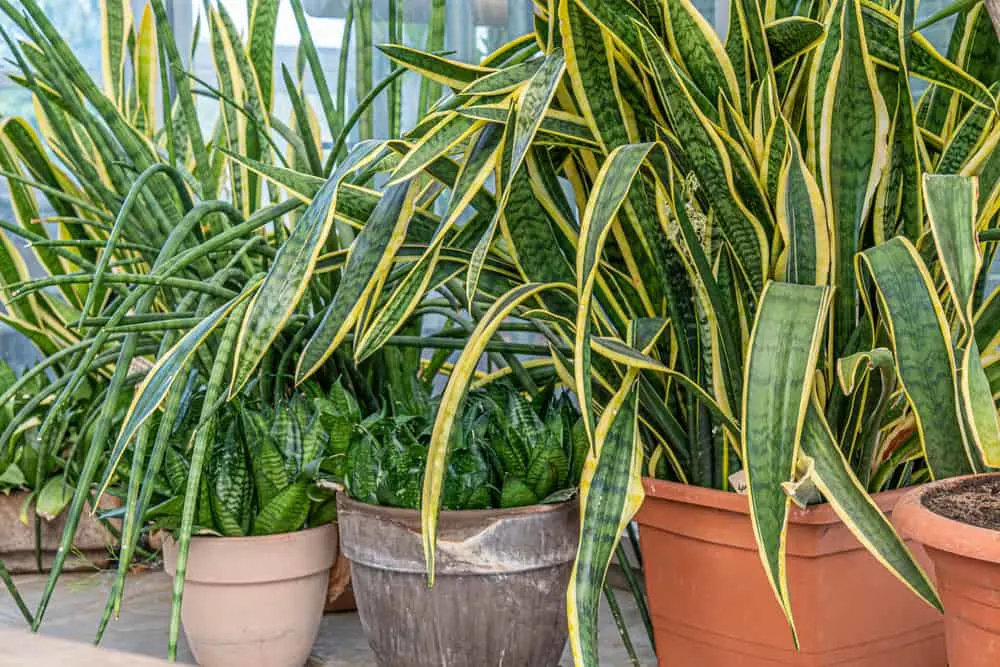
Sansevieria leaves are known for their strong, upright shape. It’s one of the things we love most about them. So what do you do when those previously tall, proud standing leaves suddenly start to fall over, drooping or bending around the pot?
Drooping or bending leaves could be a sign of a few problems, with the most common being overwatering.
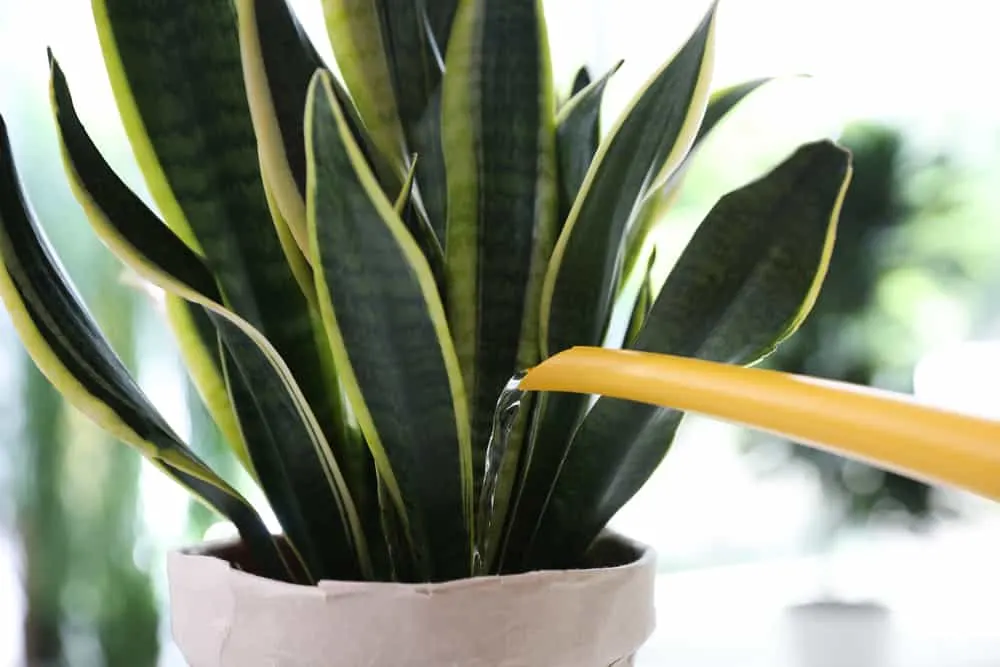
Snake plants’ leaves are succulent-like, meaning they are thick and store a lot of water. This is why they can tolerate a bit of neglect. As the leaves store water, they can go a couple of weeks without a drink.
When you give the plant too much water, you may unintentionally cause root rot. The roots are not used to sitting in water for long periods of time and will begin to degrade when exposed to these conditions. When the roots are damaged, they cannot transport water and essential nutrients around the plant, resulting in the bending leaves.
On the opposite end of the spectrum, underwatering can also cause the leaves to droop. Water fills the plant cells in the leaves, keeping them strong and upright. Without water, the leaves begin to thin out and can’t hold themselves anymore, slowly falling over.
To fix this issue, adjust your watering schedule. Only water when the soil has dried out for several days – these plants prefer underwatering to overwatering.
If the roots are badly damaged, removed the plant from its pot and cut off the damaged areas carefully, repotting in new soil when you’re finished.
Less often, drooping leaves could be a sign of heat stress. While snake plants can handle full sun spots, too much can be a bad thing. If your snake plant is placed in the baking hot sun all hours of the day, especially in front of a window, move it into a spot with more indirect bright light.
2. Leaves are narrow and stretched
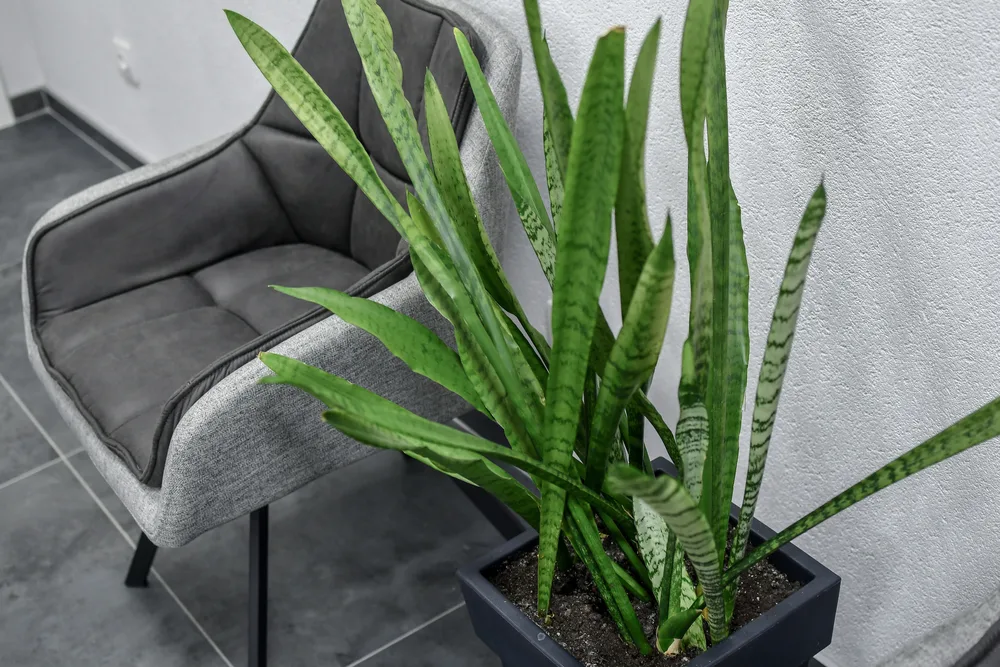
Too much sun can cause the leaves to droop, but too little can also have adverse effects.
Plants need sunlight for photosynthesis to keep themselves alive. They will do whatever they can to ensure they get enough of it. This is especially true for succulent-like plants that require more sunlight than other thin-leaved plants.
When snake plants don’t get enough light, they will begin to grow and stretch toward the nearest light source. This stretching is known as etiolation – the cause of extra-long, narrow and thin leaves that don’t look particularly attractive and aren’t good for the plant either.
The solution here is simple – give your plant more light. Bright indirect light near a window should be sufficient, but these plants do prefer some direct sunlight for a few hours of the day.
Unfortunately, once the leaves have grown this way, it will be difficult to get the plant to its pre-etiolation growth and appearance. If your plant is too far gone, wait for it to grow shoots and repot them, or propagate the plant by taking cuttings from the healthiest looking leaves.
Here’s a great tutorial to propagating snake plants in four different ways.
3. Leaves are soft and mushy
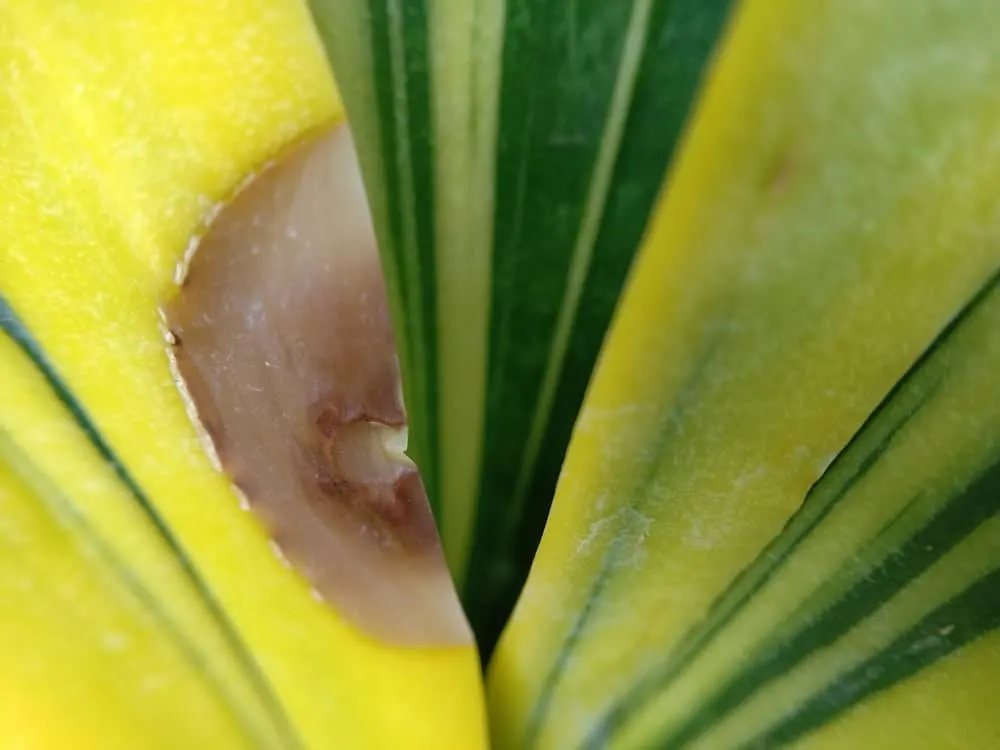
If you feel a healthy Sansevieria leaf, you’ll find that it is quite thick and firm. But, in unhealthy plants, that is not always the case.
Soft, mushy leaves are most often a sign of overwatering. Just as overwatering can cause the roots to rot and the leaves to fall over, it can also result in too much moisture in the leaves and around the plant, causing them to rot too. The insides of the leaves will slowly begin to disintegrate and die off, leaving behind the mushy texture.
Even if you are watering correctly, the same problem can still occur if your pot does not have enough drainage. Most plants, but especially succulent-like plants like Sansevierias, need well-draining soil as they cannot be left sitting in water.
If your pot does not have any drainage holes, or the soil is too dense or compacted to let the soil drain correctly, you may encounter mushy leaves.
In these cases, remove the plant from the original pot and repot in new, well-draining soil intended for succulents. Alternatively, you can make your own using a combination of potting soil and coarse sand to improve drainage. Trim rotten roots and cut back the damaged leaves to promote new, healthy growth.
If watering is not your issue, humidity may be the culprit. This is quite unlikely, as the humidity high enough to cause mushy leaves is more than most of us can handle. However, if your snake plant is sitting next to your humidifier or in a consistently moist bathroom, it’s not impossible.
Remove the damaged leaves, move the plant into a drier area, and it should return to normal.
4. Leaves are deformed or misshapen
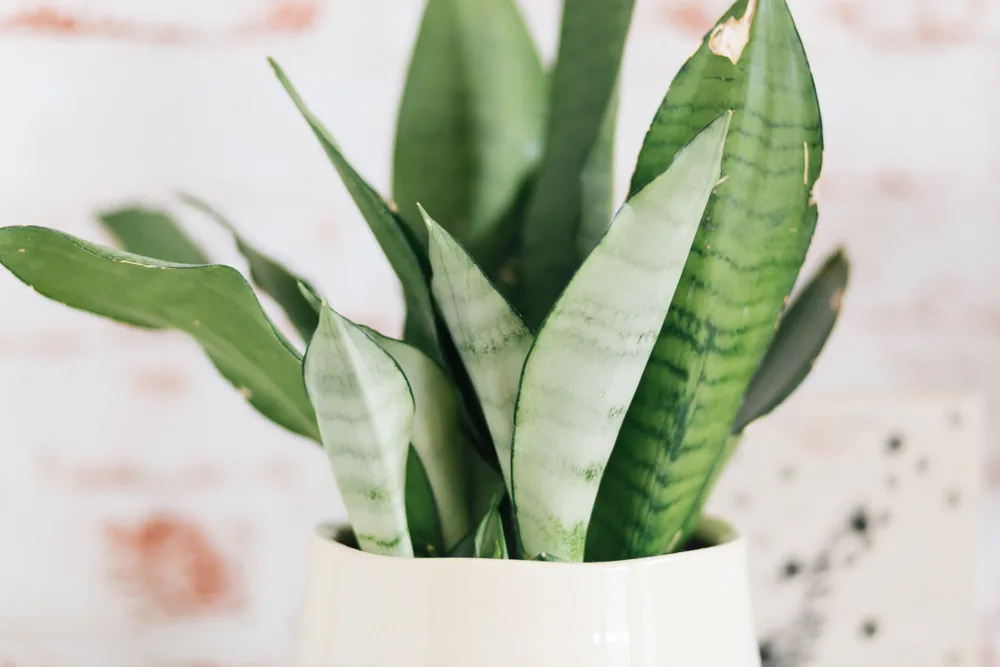
If your leaves aren’t mushy or falling over, but still don’t seem quite right, you may have a pest infestation on your hands.
Small bugs like thrips or mites can be tough to spot. They are usually only noticed when the signs of their damage surface. These bugs sit on the leaves of the plant and in the soil, sapping the juices from the inside. This damage, especially when left without treatment long-term, will cause the leaves to become deformed or misshapen.
While not as common indoors, disease can also be a cause of misshapen leaves. In hot and humid weather, various fungal diseases can settle on your plants and cause areas to rot and die off, resulting in deformation.
When watering your plants, always keep a close eye out for signs of pest or disease problems. Pests can be removed with natural homemade pest sprays or with horticultural oil found at your local nursery or online.
Fungal diseases are unfortunately more difficult to tackle. If the problem is not too severe, you can remove the affected parts of the plants by pruning, or apply an organic fungicide to the leaves. If the disease is uncontrollable, you may have to get rid of the plant before it spreads to your other houseplants.
5. Leaves have brown spots or tips
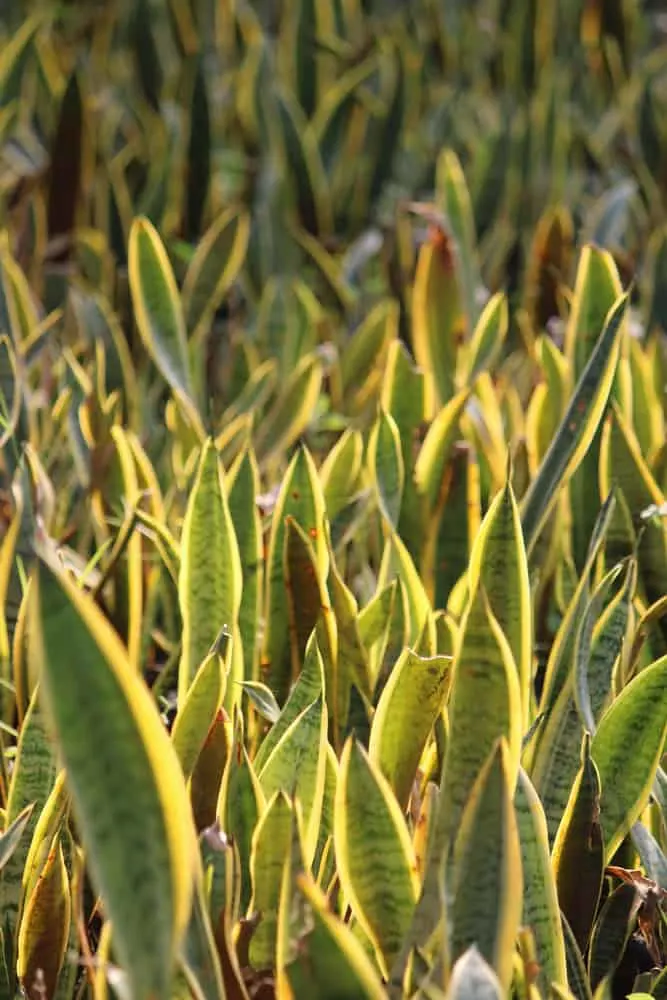
One of the more common snake plant problems, and unfortunately one of the more alarming ones, is brown spots or tips on the leaves. This problem also has several potential causes you will need to work through before you find the real culprit.
The first cause of brown spots is not really something you can rectify – physical damage. If snake plant leaves are damaged, possibly from adverse weather or transportation, the site of the damage may become brown. Unfortunately, there’s not much you can do about it as the injury has already been caused, but you can prune away the leaf to promote new, healthy growth.
The second cause is the weather – extreme temperatures to be exact. When exposed to frost, the cold freezes the cells of the plant, killing them once they thaw. This will cause brown spots wherever the damage occurred. As those cells are dead, they will not return to normal.
On the other hand, incredibly hot temperatures can also cause browning – this time at the tips. If your snake plant is exposed to too much sun, the ends of the leaves can burn, resulting in browning. If you’ve recently moved your plant to a sunnier spot, this is likely the cause of the problem.
Nutrient issues can also cause brown patches on the leaves and at the tips. Although you may have good intentions when fertilizing your plants, too much fertilizer can actually cause the roots to burn, resulting in brown tips. Nutrient issues can also be caused by the use of tap water, which is often packed with treatment chemicals that the plants don’t appreciate.
Always use fertilizer according to package instructions only when necessary and occasionally swap your tap watering routine with filtered water to prevent chemical buildup.
6. Leaves are turning yellow
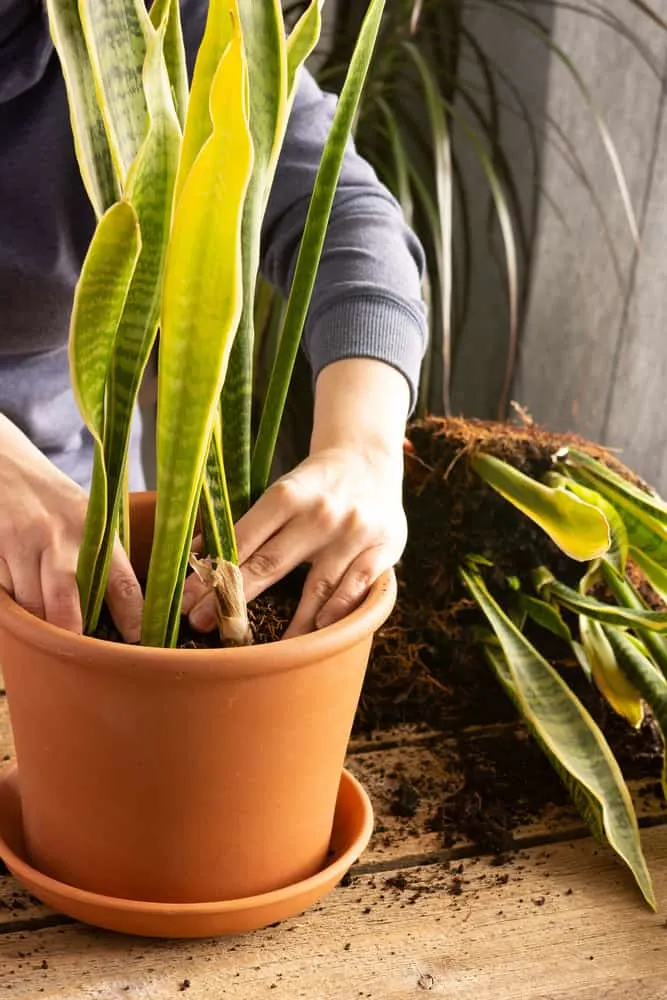
Leaves turning yellow is one of the most common houseplant problems. Usually, that isn’t the case for Sansevierias (other problems will typically show up first) but it’s not unheard of.
Related Reading: 7 Reasons Your Peace Lily Leaves Are Turning Yellow
Like many other problems on this list, the main cause is overwatering. In case you couldn’t already tell, overwatering is one of the worst things you can do to a snake plant. Roots left sitting in water will rot, resulting in an inability to send nutrients to parts of the plants that need it. This causes the yellowing leaves houseplant owners are so familiar with.
Instead of watering on a schedule, test the moisture of the soil about once a week with a meter or your finger. The soil should be left to dry out almost completely before watering again.
The same problem can result from underwatering or even inconsistent watering. When you underwater, essential nutrients and water don’t travel to the leaves, causing them to turn yellow. Inconsistent watering – too much or too little at once rather than a consistent, standard amount – can also cause plant stress that results in yellowing leaves.
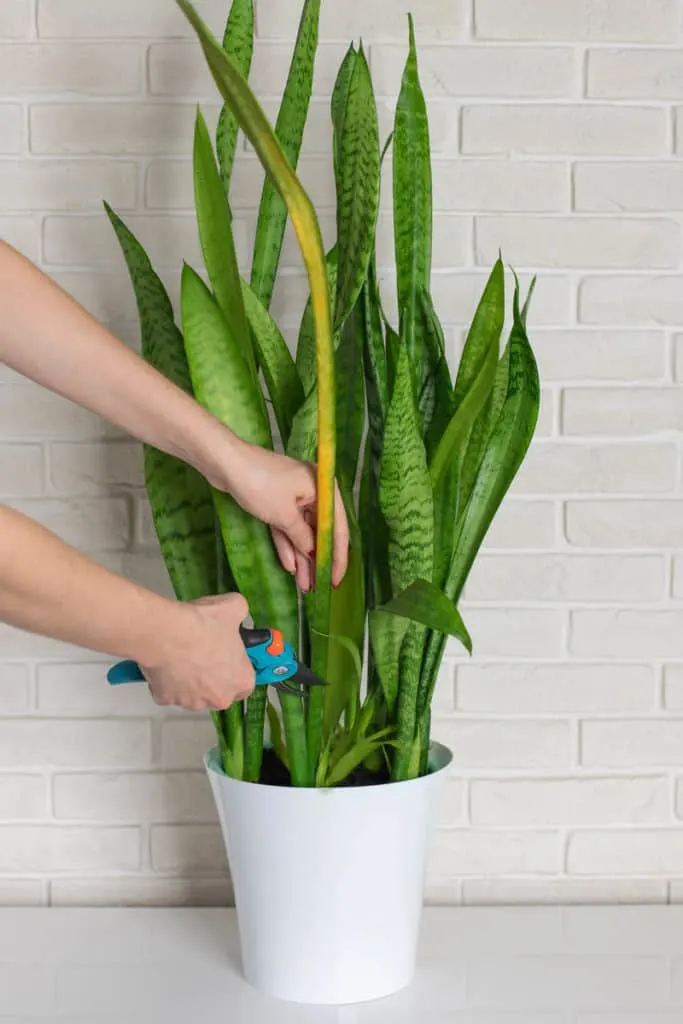
Pests also cause yellowing leaves, usually accompanied by other signs of damage like brown spots or deformation. Prune the affected leaves, remove the pests, and the plant should return to normal.
7. Leaves are wrinkled
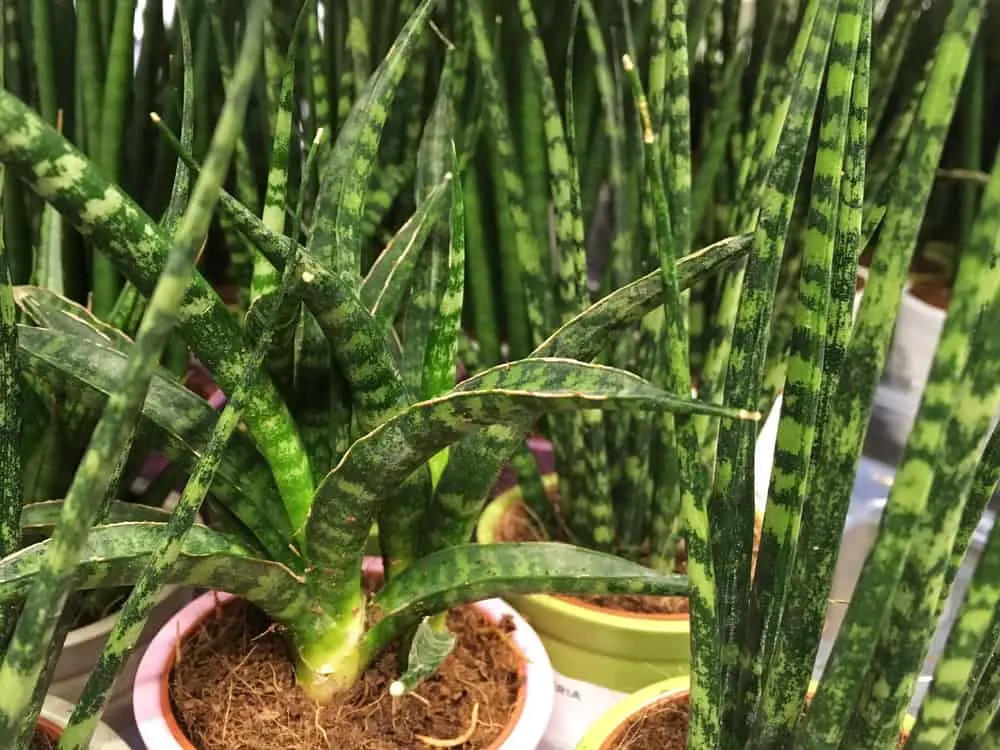
Snake plant leaves are normally deep in color with shiny, healthy-looking leaves. If your snake plant has wrinkled and dull leaves, you know something’s not right.
There are a number of causes for wrinkled leaves, but most are related to temperature. If you’re experiencing particularly warm weather for several days, your snake plant may become heat-stressed. This excessive warmth and stress will cause the leaves to wrinkle. Excessive sunlight can cause the same problem.
Wrinkled leaves can also be a sign of underwatering. Although they prefer a bit of neglect, if you keep your Sansevieria underwatered too long, it may respond by wrinkling, as there is not enough water in the cells of the leaves to keep them plump. This is especially the case in warmer weather when pots dry out faster and plants need more attention.
Fixing the problematic conditions should help your plant plump back up and return to normal.
If you’ve recently bought, moved, or repotted your snake plant, wrinkled leaves could also be a sign of stress. Plants do not appreciate changes in environment and could experience shock when moved around too much. It will take a while for the plant to acclimatize, but it should eventually return to normal on its own.
8. Leaves are curling or twisting
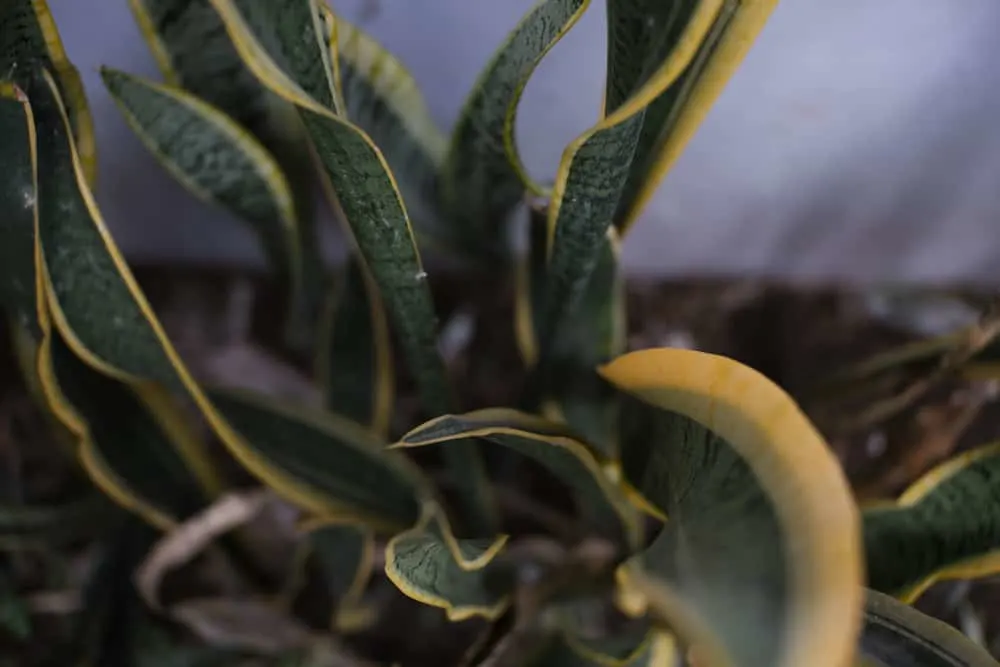
Most snake plants have relatively wide, flat leaves – especially once they grow taller. Leaves that are curling inward or outward, or twisting around each other, are a sign of a bigger issue.
Like the previous issue, the root cause is often underwatering. When the leaves don’t get enough water for long periods of time, they begin to lose their characteristic upright shape, curling inwards to retain moisture. If accompanied by wrinkling or bending leaves, you can be pretty certain underwatering is the issue.
Pests can also cause curling leaves – particularly thrips. Leaf curl is one of the first signs of infestation, with other problems like browning or deformation appearing if the problem is not treated. Apply horticultural oil to the leaves to suffocate the pests and wipe with a cloth to remove them.
Overfertilization is another possible cause of curling leaves. These plants are not heavy feeders, and will usually be fine without any fertilizer application, or one diluted dose once in the growing seasons. If too much fertilizer is applied, the roots may become damaged, resulting in curling leaves and browning, hardened edges.
Only apply fertilizer when absolutely necessary and always according to the instructions. More fertilizer does not always equal more growth.
9. Roots are brown and mushy
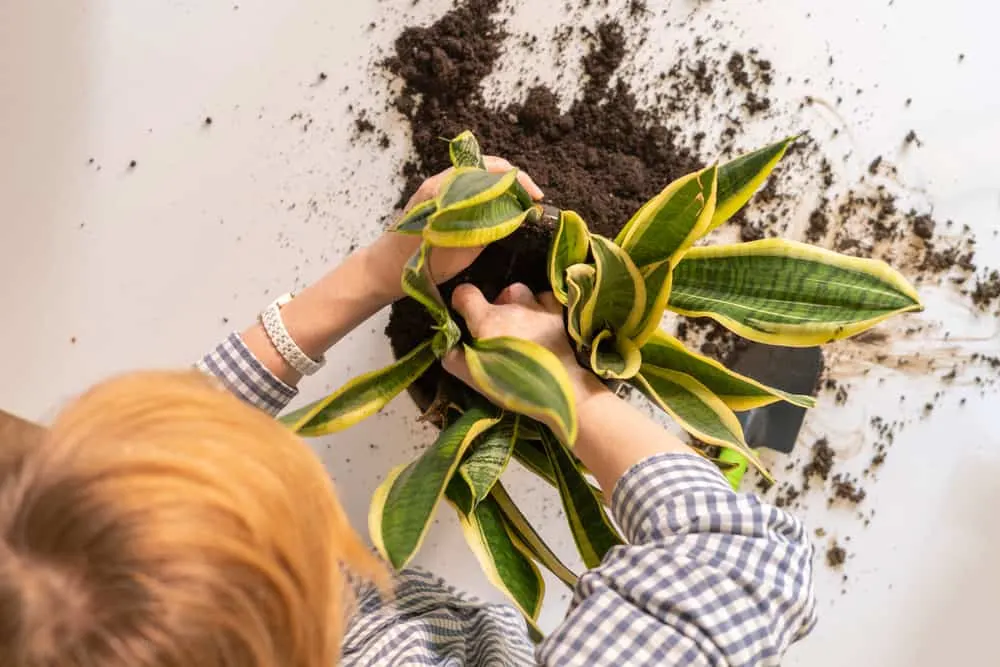
If you’re in the process of repotting your snake plant and notice the roots are brown and mushy, don’t look over the issue. Unresolved root problems are guaranteed to lead to the death of your plant, as the roots are essential to keeping your plant alive.
Brown and mushy roots are the result of two issues, the most common of which is overwatering. Almost every problem on this list can be caused by watering problems in some form, and this problem is no exception.
When left to sit in water, snake plant roots experience root rot, a fungal problem that disintegrates the tissue and stops the plant from transporting essential water and nutrients. Always err on the side of underwatering rather than overwatering, as the problems it causes – especially root rot – can be difficult to rectify.
The second cause is disease, usually in combination with the overwatering issue. Fungal diseases can live inside soil and attack the roots, especially in wet and humid weather. Using soil straight from the garden to pot up your snake plant could cause this and a number of other issues. Garden soil is not a suitable potting soil as it can harbor disease and compact easily, preventing water drainage.
If you encounter problems with your roots, trim off all affected areas until the healthy growth is exposed, rinse off any remaining soil and repot in high-quality potting soil amended with sand to improve drainage.
10. The plant isn’t growing
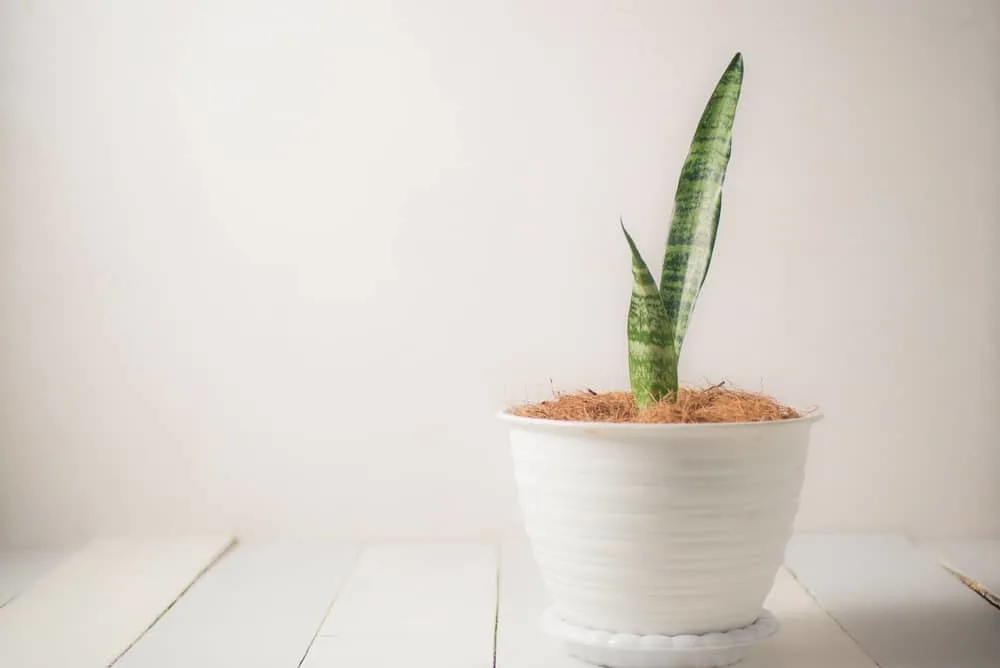
The last problem may be difficult to spot, as snake plants don’t grow particularly fast, but it is a problem nonetheless. Inadequate growth is usually noticed after several months or even years, so don’t be alarmed if the leaves haven’t grown in a few days. However, if the plant stops growing suddenly, or isn’t growing as much as it has in previous years, you could be facing a few issues.
The first issue is the size of the pot. Snake plants need to be repotted every couple of years – usually three to five. If your plant has been in the same pot for several years and has stopped growing, you can be certain the plant is pot-bound. Repot into a pot one or two sizes up and it should be growing again in no time.
The second likely cause is lack of sunlight. Plants need sunlight to photosynthesize, allowing them to grow bigger. Without adequate sunlight, your snake plant will not have enough energy to grow bigger. Place it in a sunnier spot (but not too much direct sunlight) and see if that resolves the problem.
Thirdly, a lack of growth could be caused by a lack of nutrients in the soil. This usually goes hand in hand with repotting, but could also be the cause if the plant was originally potted in soil with fewer nutrients. Once a potted plant soaks up all the nutrients from the soil it’s in, that soil becomes depleted and can no longer feed the plant. Apply a balanced liquid fertilizer to the soil, but don’t overfertilize.
Besides these main issues, almost any problem can cause lack of growth. Improper watering, overfertilization, excessive sunlight exposure or pest and disease problems all result in plant stress. During times of stress, the plant prioritizes staying alive rather than growing bigger.
Take a look at the growing conditions to determine which cause is most likely and rectify each one by one until you eliminate the symptoms.
